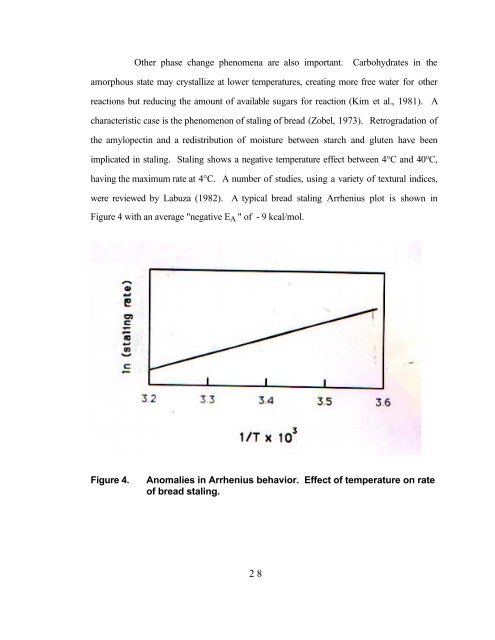the handbook of food engineering practice crc press chapter 10 ...
the handbook of food engineering practice crc press chapter 10 ...
the handbook of food engineering practice crc press chapter 10 ...
You also want an ePaper? Increase the reach of your titles
YUMPU automatically turns print PDFs into web optimized ePapers that Google loves.
O<strong>the</strong>r phase change phenomena are also important. Carbohydrates in <strong>the</strong><br />
amorphous state may crystallize at lower temperatures, creating more free water for o<strong>the</strong>r<br />
reactions but reducing <strong>the</strong> amount <strong>of</strong> available sugars for reaction (Kim et al., 1981). A<br />
characteristic case is <strong>the</strong> phenomenon <strong>of</strong> staling <strong>of</strong> bread (Zobel, 1973). Retrogradation <strong>of</strong><br />
<strong>the</strong> amylopectin and a redistribution <strong>of</strong> moisture between starch and gluten have been<br />
implicated in staling. Staling shows a negative temperature effect between 4°C and 40°C,<br />
having <strong>the</strong> maximum rate at 4°C. A number <strong>of</strong> studies, using a variety <strong>of</strong> textural indices,<br />
were reviewed by Labuza (1982). A typical bread staling Arrhenius plot is shown in<br />
Figure 4 with an average "negative E A " <strong>of</strong> - 9 kcal/mol.<br />
Figure 4.<br />
Anomalies in Arrhenius behavior. Effect <strong>of</strong> temperature on rate<br />
<strong>of</strong> bread staling.<br />
28














